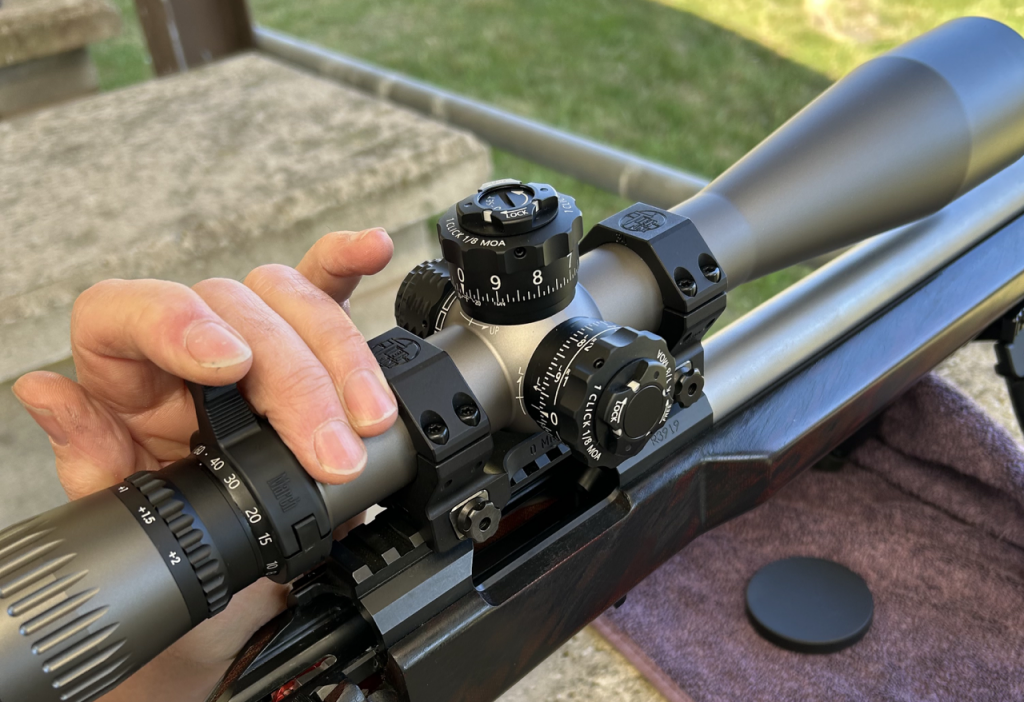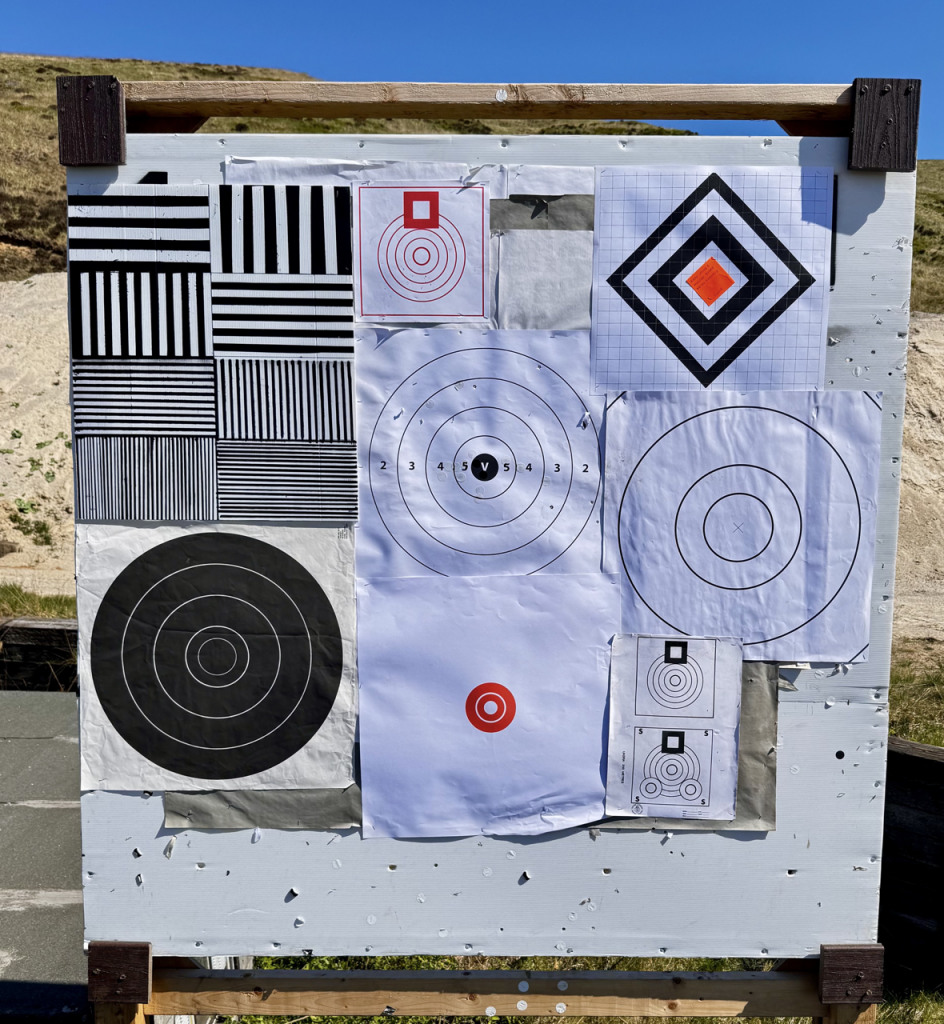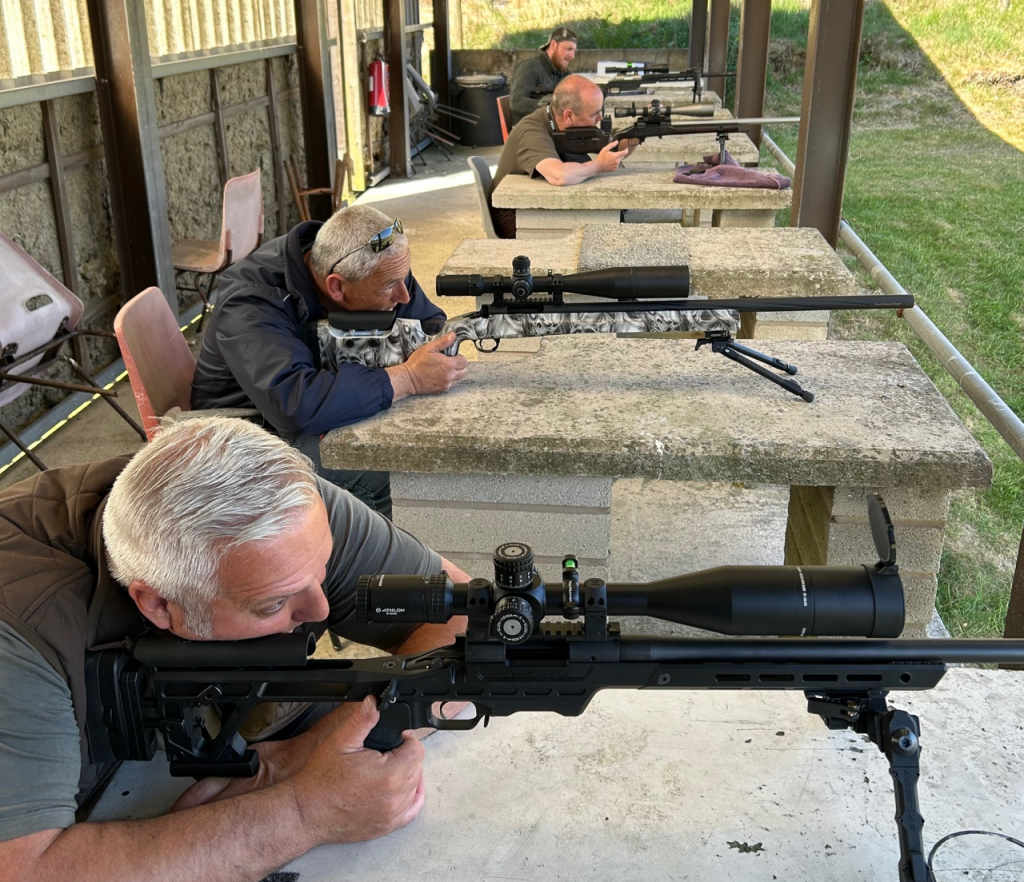Those of you who read the initial report on this latest offering from March will recall that we suffered from a very miragey (is there such a word?) day when carrying out the all important long-range optical test.

The article generated some interest amongst fellow shooters who shoot F Class and long-range benchrest competition so, when another test opportunity arose on a seemingly better day, a few other shooters were keen to pit their optics against the March.
In addition to the 8-80 March, we had my 15-60 Vortex Golden Eagle, a budget Athlon 10-45, a Delta Stryker 5-50 and another budget Athlon Gen11 7-35. All scopes – except the Athlon 7-35 – were rifle mounted and rested front and rear – essential for serious optical evaluation.
This time we revert to my old test target but with a couple of changes – the main one being a lens test card with black and white parallel lines. There were four spacings of lines – one inch, half inch, quarter inch and eighth inch. If you’ve never used a chart of this type they are very good for sorting lens resolution – if the optics can’t ‘separate’ the lines you just see a grey mass.

OK, five pairs of eager eyes are keen to go and the rifle/scopes are set up on the concrete benches in Diggle’s 1000 yard benchrest range. Can the Majesta show it’s class?
Although it is a brilliantly clear blue sky with a light breeze and the temperature around 17 degrees, there still a light mirage present. Bugger! However, it comes and goes – giving us a better chance to compare. The five of us of us eagerly switch from scope to scope ‘teasing out’ the best picture.

After half an hour or so we begin to form a few opinions. All the scopes will resolve the top half of the lens test card i.e. the one inch and half inch lines. As the mirage comes and goes some can just pick out the quarter-inch lines but none the one eighth – just a grey square. Amazingly, the sub £500 Athlon 10-45 demonstrated that it is more than adequate (optically) to accurately shoot 1000 yard F Class, offering a good picture on the F Class targets. However, other factors come in to play – accuracy of adjustment for example – where the Majesta scored top marks.
Finally, it was time to reach a conclusion. We all agreed there was none better than the Majesta, with its bright clear image and wide field of view. Also, we couldn’t pit anything against the Majesta’s 80 power – the 15-50 Delta Stryker and my 15-60 Vortex were the closest we could get. At this kind of magnification, the Delta Stryker impressed us all with its bright, clear image – just having the edge on my Vortex, which although clear was not as bright an image.
All the scopes could resolve the rings on the black target with white rings and the white target with black rings (on the right) which are similar to the 1000 yard F Class target. None however could pick out the rings on the small red benchrest target – a totally mirage free day would be needed for that.
In conclusion, the Majesta was not bettered by any of the scopes tested. In second place we voted the Delta Stryker – good bright optics and providing the adjustment is accurate, what more do you need? Great value at around £1650. However, this is all very well until something goes wrong and that’s where the guarantee back-up kicks in – or does it?
The only scope manufacturers’ warranty I have tested is Leupold, which is as good as it gets and Nightforce which got a free refurbishment but got caught up in Customs on return from America. (Thanks to Toni for sorting that one for me!) Vortex offer a no-quibble guarantee which sounds great but has anyone tested it? Thankfully I haven’t needed to with my two Golden Eagles. With Delta Stryker it’s a 10 year warrany and amazingly, Athlon also offer a lifetime warranty covering claims resulting from normal use. With regard to March – they obviously take warranty claims seriously – have a good read of their website to learn more – with some good tips on focussing as well.
If money were no object then sure, we’d all chose the Majesta – it’s bursting with all the features any shooter could possibly want and with exceptional build quality. It offers exceedingly accurate adjustment and it leaves nothing on the table optically but, money is important to a lot of us and as we found out, many firms now make exceedingly good lenses. But, the glass is only part of a scope – we also need robust build-quality, shootable reticles, zero stops maybe, adequate and accurate adjustment, choice of first or second focal plane and, if it’s going on a competition rifle, then weight could be important.
I see shooters trying to assess lens quality by looking through a hand-held scope – you can’t. It needs to be solidly mounted, using a proper viewing target on a good day. Even then it’s difficult to reach a conclusion – you always need to compare with other scopes. I was disappointed we couldn’t get the Zero Compromise scope back for comparison but maybe later as I know the shooter who bought the one we tested a few weeks ago. Watch this space!
